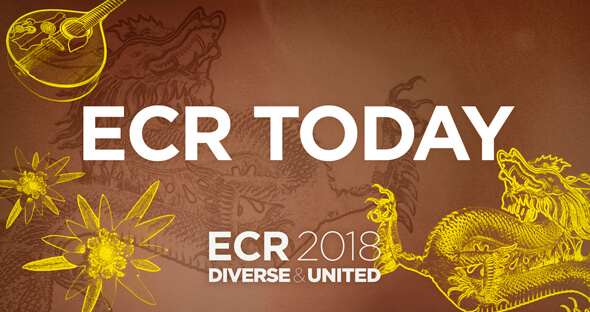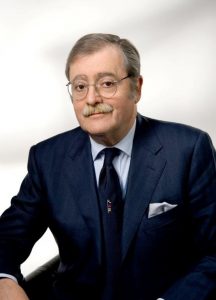Incoming ESR President lays out clear vision for ECR 2020
By Julia Patuzzi
It is a well-established tradition that on the final day of the congress, ECR Today looks ahead to next year’s ECR. We therefore spoke with Professor Boris Brkljačić from Zagreb, Croatia, the incoming ESR President, who is in charge of ECR 2020. He shared with us some of his ideas and plans for the next European Congress of Radiology.
ECR Today: Professor Brkljačić, the first visual impression of the next congress is always the congress poster. For ECR 2020 you chose artwork by the award-winning Canadian illustrator Peter Diamond, depicting a young woman looking at a small object floating just above her cupped hand. Can you tell us a little about how this particular design came about?

Incoming ESR President Boris Brkljačić is professor of radiology and vice-dean at University of Zagreb School of Medicine, Zagreb, Croatia, and chair of the Department of Diagnostic and Interventional Radiology of University Hospital ‘Dubrava’ in Zagreb.
Boris Brkljačić: The ESR Office provides several options for the congress poster, created by professional designers, and the Congress President and PPC members select one. The selected solution was the best among the proposed options. It resembles Rembrandt’s artwork, with sharp light and dark contrast, and is in good accordance with the slogan for ECR 2020: ‘A Clear Vision for Radiology’. The small floating object represents artificial intelligence, which will be an important topic at the congress, and the names of the ECR 2020 ‘ESR meets’ countries are visible at the bottom of the poster. The 2020 poster contains fewer colours and illustrations compared to the 2019 poster, and is concordant with the visual style of the ESR’s main scientific publication, the journal European Radiology.
ECRT: As the new ESR President, you are also chairperson of the Programme Planning Committee for ECR 2020, which has already been working on preparing the scientific programme for a few months. Can you tell us something about the highlights of the 2020 programme or any specific focus we can expect?
BB: I am very fortunate to have selected excellent Programme Planning Committee members, who are hard-working and dedicated experts in their fields. Planning has already been running at full speed for a few months in order to create a well-balanced programme of very high-quality professional, educational and scientific content. New Horizons Sessions, State of the Art Symposia and Special Focus Sessions have already been selected and mostly created; they are very relevant and balanced, so that young radiologists and experts in particular radiological fields will have interesting sessions to choose from in all areas of radiology. Emerging and hot topics will be covered, like lung cancer screening, artificial intelligence, stroke diagnosis and treatment, and many others. I expect that the plenary/honorary sessions should be the highlight of the congress, as they are interesting for all participants, regardless of their age and expertise. Read more…




